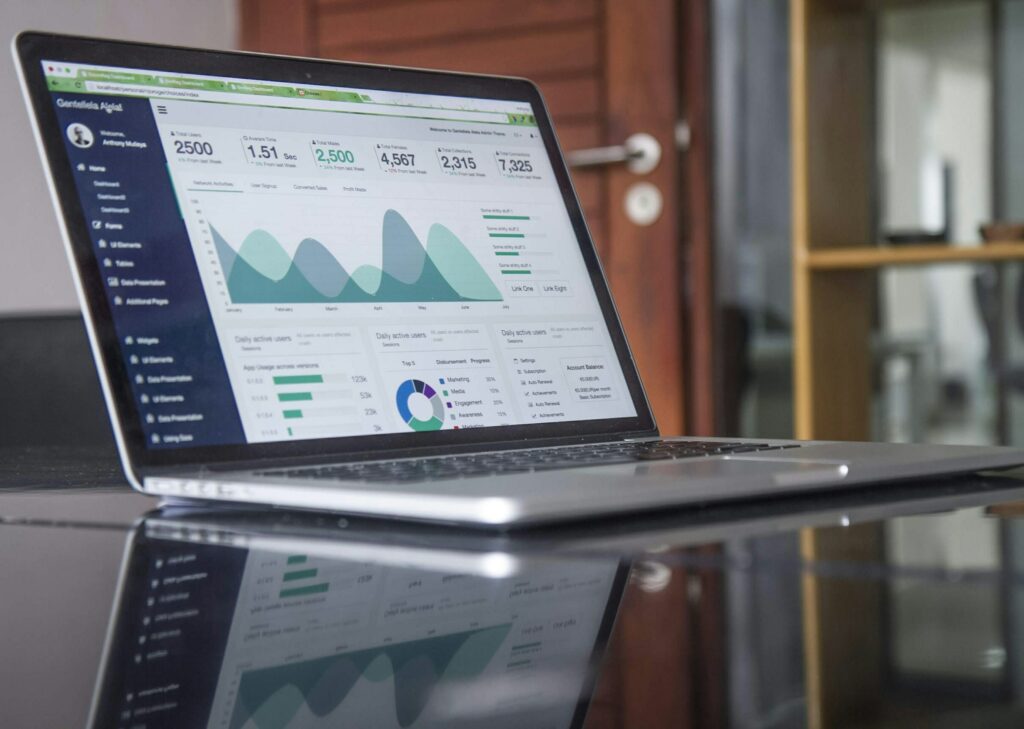Have you ever wondered what advantages analytics tools can bring to your business? By utilizing analytics tools, you can gain valuable insights into your organization’s data, allowing you to make informed decisions and drive growth. These tools provide a wealth of information that can help you identify patterns, trends, and opportunities. Whether it’s analyzing customer behavior, optimizing marketing campaigns, or improving operational efficiency, analytics tools offer a wide range of benefits that can give your business a competitive edge. In this article, we will explore the advantages of using analytics tools and how they can revolutionize the way you do business. So, let’s dive in and uncover the power of analytics!

Improved Decision Making
Real-time data analysis
Analytics tools can provide businesses with real-time data analysis, allowing you to make decisions based on up-to-date information. This enables you to respond quickly to changes in the market or customer behavior. For example, if you notice a sudden increase in demand for a particular product, you can quickly adjust your production or inventory levels to meet the demand.
More accurate predictions
By analyzing historical data and using advanced algorithms, analytics tools can help you make more accurate predictions about future trends and outcomes. This can be particularly useful in industries like finance or marketing, where accurate predictions can lead to better investment decisions or more effective advertising campaigns. For instance, a retail company can use analytics tools to analyze past sales data and predict which products are likely to be popular in the upcoming holiday season.
Identifying patterns and trends
Analytics tools can uncover hidden patterns and trends in your data that may not be immediately obvious. By identifying these patterns, you can gain insights into customer behavior, market trends, or operational inefficiencies. For example, analyzing customer purchase data may reveal that certain products are frequently bought together, allowing you to create bundled offerings or cross-sell recommendations to increase sales.
Enhanced Customer Insights
Understanding customer preferences
Analytics tools can help you gain a deeper understanding of your customers by analyzing their purchase history, website behavior, or feedback. By identifying their preferences, you can tailor your products or services to better meet their needs. For instance, an e-commerce platform can analyze customer browsing and purchase data to personalize product recommendations, improving the overall shopping experience.
Personalized marketing strategies
With the help of analytics tools, you can create personalized marketing strategies that resonate with your target audience. By analyzing customer demographics, preferences, and behavior, you can segment your customers and deliver targeted marketing campaigns. For example, a travel company can use analytics tools to identify potential customers who are interested in beach destinations and then send them targeted offers or promotions.
Identifying and targeting high-value customers
Analytics tools can help you identify your most valuable customers by analyzing various factors such as purchase history, customer lifetime value, or referral behavior. By identifying these high-value customers, you can prioritize personalized marketing efforts or loyalty programs to retain their business. For example, a telecommunications company may identify high-value customers who have been loyal for a long time and offer them exclusive discounts or rewards.
Optimized Operations
Streamlining processes
By analyzing operational data, analytics tools can identify inefficiencies or bottlenecks in your business processes. This allows you to streamline operations and improve productivity. For example, a manufacturing company can analyze production data to identify areas where there is a high rate of defects, enabling them to make process improvements and reduce waste.
Identifying bottlenecks and inefficiencies
Analytics tools can help you identify bottlenecks or inefficiencies in your supply chain or other operational processes. By pinpointing these areas, you can take corrective actions to optimize your operations. For instance, a logistics company can analyze delivery routes and timings to identify bottlenecks and optimize the scheduling of deliveries, leading to faster and more efficient service.
Optimizing inventory management
Analytics tools can provide insights into inventory levels, demand patterns, and sales forecasts, allowing you to optimize your inventory management. By accurately predicting demand and avoiding stockouts or excess inventory, you can reduce carrying costs and improve cash flow. For example, a grocery store can use analytics tools to analyze sales data and determine optimal stocking levels for different products, ensuring they have enough stock to meet customer demand without excess wastage.
Effective Risk Management
Identifying potential risks
Analytics tools can analyze historical data and identify potential risks or threats to your business. By identifying these risks, you can proactively take measures to mitigate them. For example, analyzing customer transaction data can help identify patterns of fraudulent activity, allowing you to implement fraud detection measures.
Mitigating fraud and security threats
Analytics tools can help businesses detect and prevent fraud by analyzing patterns, anomalies, or suspicious activities in their data. By identifying potential fraud or security threats, you can take prompt action to protect your organization and your customers. For instance, a financial institution can use analytics tools to analyze customer transactions and identify fraudulent activities such as unauthorized fund transfers.
Improving compliance with regulations
With the help of analytics tools, businesses can ensure compliance with regulations by analyzing and monitoring their data. By identifying any non-compliant activities, you can take corrective actions to avoid penalties or legal consequences. For example, a healthcare organization can analyze patient data to ensure compliance with privacy regulations like HIPAA and identify any potential data breaches.

Cost Reduction
Identifying cost-saving opportunities
Analytics tools can help businesses identify cost-saving opportunities by analyzing various aspects of their operations, such as production costs, energy consumption, or supply chain efficiency. By identifying areas where costs can be reduced, you can optimize your expenses and improve profitability. For instance, a manufacturing company can use analytics tools to analyze energy consumption patterns and identify opportunities to reduce energy costs through equipment upgrades or process optimizations.
Optimizing resource allocation
By analyzing data on resource utilization, analytics tools can help businesses optimize their resource allocation. This can include optimizing employee schedules, equipment usage, or inventory levels. By ensuring resources are allocated efficiently, you can minimize waste and improve productivity. For example, a call center can use analytics tools to analyze call volumes and patterns to optimize staffing levels, ensuring they have enough agents to handle peak call times without overstaffing during slower periods.
Reducing wastage and redundancies
Analytics tools can help businesses identify areas of wastage or redundancies in their operations. By analyzing data on resource usage, production processes, or inventory levels, you can identify opportunities to reduce waste and improve efficiency. For instance, a restaurant can use analytics tools to analyze food waste data and identify areas where waste can be minimized through better portion sizing or ingredient management.
Competitive Advantage
Gaining insights into market trends
Analytics tools can provide businesses with insights into market trends and customer behavior, giving them a competitive advantage. By analyzing market data, competitor information, or social media trends, you can identify emerging opportunities or changing customer preferences. For example, a fashion retailer can use analytics tools to analyze social media conversations and identify upcoming fashion trends, allowing them to stock the right products ahead of their competitors.
Benchmarking against competitors
By comparing your performance against your competitors, analytics tools can help you benchmark your business and identify areas where you can gain a competitive edge. By analyzing data on market share, pricing strategies, or customer satisfaction, you can make data-driven decisions to outperform your competitors. For instance, a hotel chain can use analytics tools to analyze pricing data of competitors in specific locations and adjust their pricing strategy to offer better value to customers.
Identifying unique selling propositions
Analytics tools can help businesses identify their unique selling propositions (USPs) by analyzing customer feedback, market data, or product performance. By understanding what sets your business apart from competitors, you can emphasize those strengths in your marketing or product development. For example, a software company can use analytics tools to analyze customer reviews and identify the features or functionalities that customers appreciate the most, allowing them to differentiate themselves from competitors.

Improved Marketing Campaigns
Measuring campaign effectiveness
Analytics tools provide valuable insights into the effectiveness of your marketing campaigns. By analyzing data on website traffic, conversion rates, or customer engagement, you can measure the impact of your marketing efforts and make data-driven decisions to optimize your campaigns. For instance, an e-commerce retailer can use analytics tools to track website conversion rates and identify areas where improvements can be made to increase sales.
Identifying target audience segments
Analytics tools can help businesses identify and understand their target audience segments by analyzing demographic data, purchase behavior, or online interactions. By segmenting your audience, you can tailor your marketing messages and strategies to resonate with specific groups. For example, a fitness equipment company can use analytics tools to identify different buyer personas based on their fitness goals and preferences, allowing them to create targeted marketing campaigns for each segment.
Optimizing marketing channels
With the help of analytics tools, businesses can optimize their marketing channels by analyzing data on customer acquisition costs, conversion rates, or return on investment (ROI). By identifying the most effective channels, you can allocate your marketing budget and resources accordingly. For instance, a digital marketing agency can use analytics tools to track the performance of different advertising channels and optimize their media buying strategies to reach the right audience at the lowest cost per conversion.
Increased Efficiency
Automating repetitive tasks
Analytics tools can automate repetitive tasks, such as data entry or report generation, saving time and reducing the risk of human error. By automating these tasks, you can free up valuable resources and improve overall efficiency. For example, a human resources department can use analytics tools to automate the process of generating employee performance reports, freeing HR professionals to focus on more strategic initiatives.
Reducing manual data entry
By leveraging data integration capabilities, analytics tools can reduce the need for manual data entry and streamline data collection processes. This not only saves time but also reduces the risk of data errors or inconsistencies. For instance, an accounting department can use analytics tools to automatically import financial data from different sources, eliminating the need for manual data entry and ensuring accuracy.
Improving overall productivity
By providing insights and analytics dashboards, analytics tools can improve overall productivity by enabling faster and data-driven decision-making. With easy access to relevant information, employees can make informed choices and take action quickly. For example, a sales team can use analytics tools to track their performance metrics in real-time, allowing them to identify areas for improvement and take corrective actions to meet their targets more effectively.
Data-Driven Innovation
Identifying market opportunities
Analytics tools can help businesses identify new market opportunities by analyzing customer needs, market gaps, or emerging trends. By leveraging these insights, you can develop innovative products or services that meet unmet customer needs or tap into new markets. For example, an automotive company can use analytics tools to analyze market data and identify the growing demand for electric vehicles, which can drive their product development and strategic partnerships in the electric vehicle space.
Developing new products/services
Analytics tools can provide valuable insights into customer preferences, feedback, or market trends, empowering businesses to develop new products or services that align with customer needs. By utilizing these insights, you can stay ahead of the competition and drive innovation. For instance, a software company can use analytics tools to analyze customer feedback and identify new features or functionalities that can be incorporated into their software products.
Predicting future market trends
By analyzing historical data and market indicators, analytics tools can help businesses predict future market trends and anticipate changes in customer demand. These predictions can guide strategic decision-making and help you stay ahead of the competition. For example, a fashion retailer can use analytics tools to analyze past sales data and predict upcoming fashion trends, enabling them to stock the right products at the right time and drive sales.
Better Resource Planning
Forecasting demand and supply
Analytics tools can help businesses forecast demand and supply by analyzing historical data, market trends, or customer behavior. By accurately predicting demand, you can optimize your supply chain and production planning, ensuring the right products are available at the right time. For example, a grocery store can use analytics tools to analyze customer purchase data and forecast demand for different products during seasonal events like Thanksgiving or Christmas.
Optimizing workforce management
By analyzing data on employee performance, schedules, or skill sets, analytics tools can help businesses optimize their workforce management. By ensuring the right people are assigned to the right tasks at the right time, you can improve productivity and reduce labor costs. For instance, a call center can use analytics tools to analyze call volumes and agent performance to optimize staffing levels and schedule breaks or shifts more effectively.
Budget allocation optimization
Analytics tools can help businesses optimize their budget allocation by analyzing data on expenses, revenue, or return on investment. By identifying areas of overspending or underinvestment, you can reallocate resources to achieve better financial performance. For example, a marketing department can use analytics tools to analyze the ROI of different marketing campaigns and channels, allowing them to optimize their budget allocation for maximum impact.
In conclusion, the advantages of using analytics tools in business are numerous and can greatly impact a company’s success. From improved decision-making and customer insights to optimized operations and cost reduction, analytics tools provide valuable insights and data-driven strategies. With enhanced risk management, competitive advantage, and more effective marketing campaigns, businesses can stay ahead of the competition and drive innovation. Additionally, increased efficiency, data-driven innovation, and better resource planning enable businesses to make informed decisions and optimize their processes. By leveraging the power of analytics tools, businesses can unlock their full potential and achieve sustainable growth in today’s competitive landscape.
